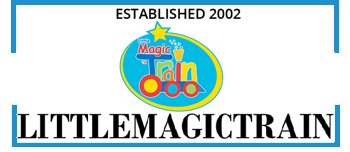The wonder of learning by seeing, feeling, and doing.
I bet you have children in your setting, that just can’t stop moving and need to wriggle or move in some way when they are sitting down and always seem to have ants in their pants! I was that child and can tell you I was a total nightmare for everyone, including me as I was miserable. My teachers and parents didn’t know about the different modalities of learning when I was a child as the dinosaurs still roamed the earth…. Thank goodness for progress and understanding.
Now we understand that your wriggly children could be kinaesthetic learners just like me and learn through, seeing, doing, and experiencing.
They, and I, often struggle to be quiet or still as they are natural doers and process information best when they can actively participate in it. I was always called Miss Fidget, and still am, but now I understand that was how I was and still do process information.
The definition of a Kinaesthetic learner.
Fleming and Mills (1992) suggested there are four modalities, Visual, Aural, Read/write and Kinesthetic (VARK) that seemed to reflect the experiences of the students and teachers.
“By definition, this modality refers to the “perceptual preference related to the use of experience and practice (simulated or real).” Although such an experience may invoke other modalities, the key is that people who prefer this mode are connected to reality, “either through concrete personal experiences, examples, practice or simulation” [See Fleming & Mills, 1992, pp. 140-141]. It includes demonstrations, simulations, videos and movies of “real” things, as well as case studies, practice, and applications. The key is the reality or concrete nature of the example. If it can be grasped, held, tasted, or felt it will probably be included. People with this strong preference learn from the experience of doing something and they value their own background of experiences and less so, the experiences of others. It is possible to write or speak Kinesthetically if the topic is strongly based on reality. An assignment that requires the details of who will do what and when, is suited to those with this preference, as is a case study or a working example of what is intended or proposed”. https://vark-learn.com/introduction-to-vark/the-vark-modalities/
Did you know… Kinaesthetic learners tend to have careers in medicine, dance, sport, engineering, and cooking.
In my experience of teaching and being a parent, I have seen that babies and toddlers are physical learners. Physical learners are also known as tactile-kinaesthetic learners (tactile for touch and kinaesthetic for movement). This means they discover the world best, when they are young, using their hands or bodies.
In some ways, all children are natural tactile-kinaesthetic learners. If you think about a baby, it reaches out to learn as they use its sense of touch to grasp physical items.
“Kinesthetic or tactile learners need to physically touch or try something in order to learn the concept best. This style is often called multi-sensory learning because tactile learners hear or see to learn, and then complete their learning by trying it out themselves.” What is tactile learning? Western Governors University. August 2020
https://www.wgu.edu/blog/what-tactile-learning2008.html#close
Babies and young children start life as kinaesthetic or tactile-kinaesthetic and then move on to other modalities, but some will maintain their pure kinaesthetic learning approach. They can also find it difficult to feel confined both physically and mentally. Something to think about as I can really vouch for that statement!
Engaging the purely kinaesthetic learners in your setting
Kinaesthetic children learn best when they are hands-on or are free to move about the room. If the activity you are working on is stationary, do let them roam and wander, as these children need to move to process the information.
Create interactive activities linked to the theme you are working on to ensure they are also engaged in the learning process.
Let the children explore items and take them apart to understand how they work.
Incorporate role-play, movement, and music as it helps them retain information.
Think about how you demonstrate things as they learn by seeing, watching, and doing. You are their role model!
Storytime – act out the story as you are reading it for them using finger puppets.
Dress up and role-play the story with the children.
For older children, you could read a book that is also a film. They then can see the characters come to life on the big screen.
Read out recipes and find and measure the ingredients together and then cook the dish.
Creating a multi-sensory learning environment ensures that no matter the modality of learning you will always be able to engage the children in the learning process while having fun.
If in doubt remember what S Club 7 said……“don’t’ stop movin” https://youtu.be/vm262cXxRrU
A little bit of inspiration…..
The wonderful Little Peeps Nursery in Caerphilly took their little ones on our ‘Looking for pandas’ adventure and incorporated all of these different kinaesthetic activities to engage them in the learning process.
They set up areas for the children to:
- Squish, cut, and roll dough to make dumplings.
- Bash and squash clementines to make juice.
- Create magical Cranes (they helped them in the adventure to get to the Great Wall of China).
- Eat noodles with fingers or chopsticks
- Paint pandas
- Match the animals to the Chinese calendar
- Make dragon masks and become scary noisy dragons
What will you do with your little ones?

